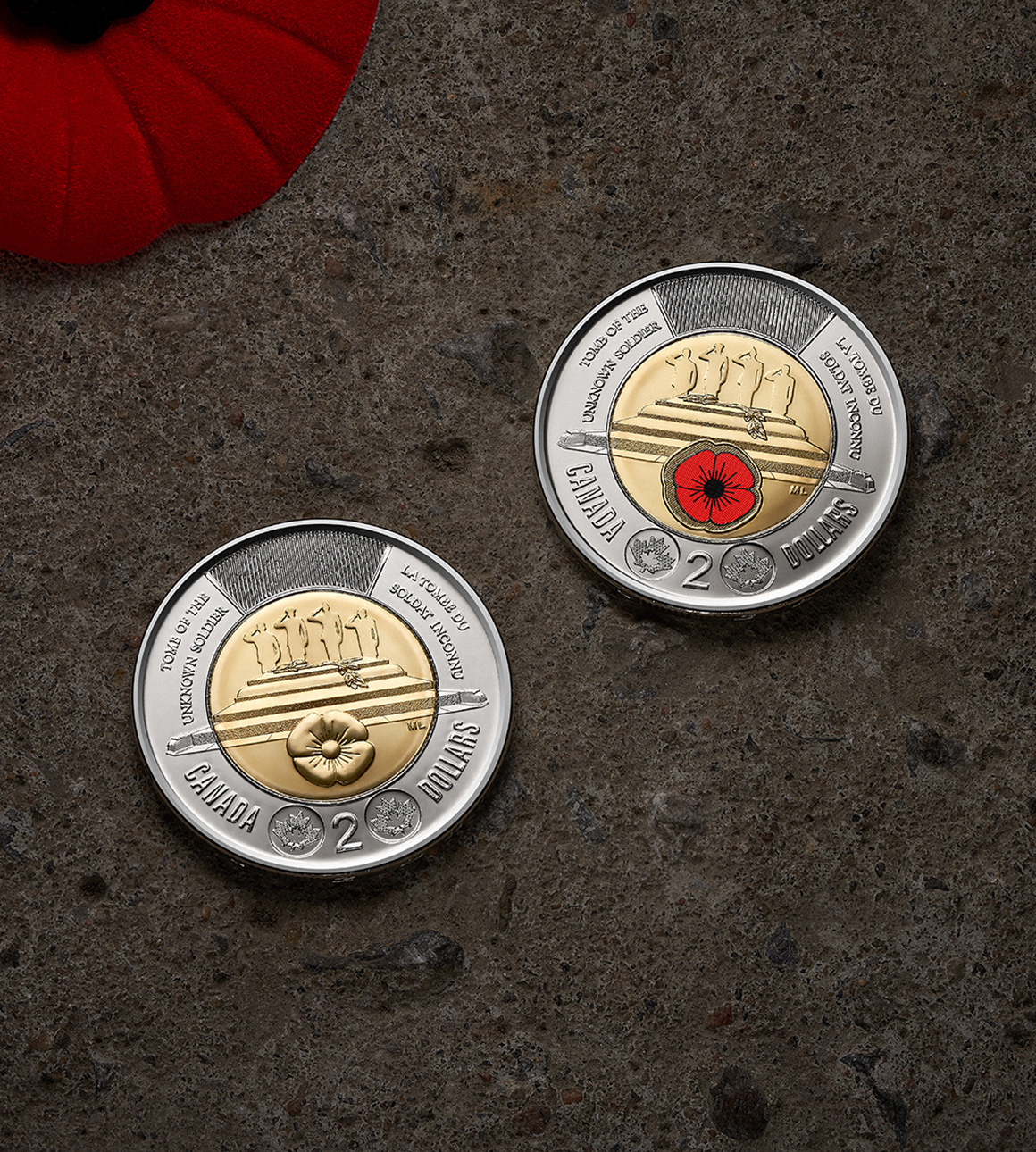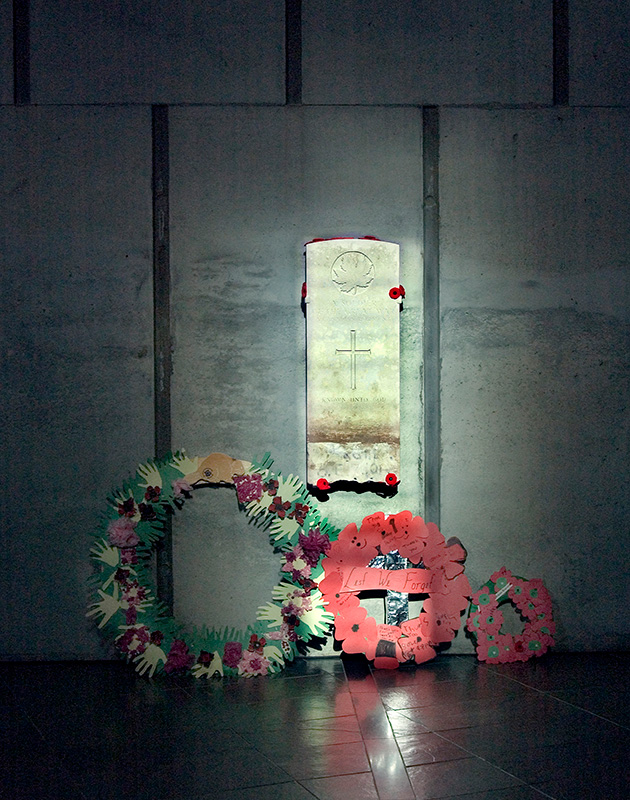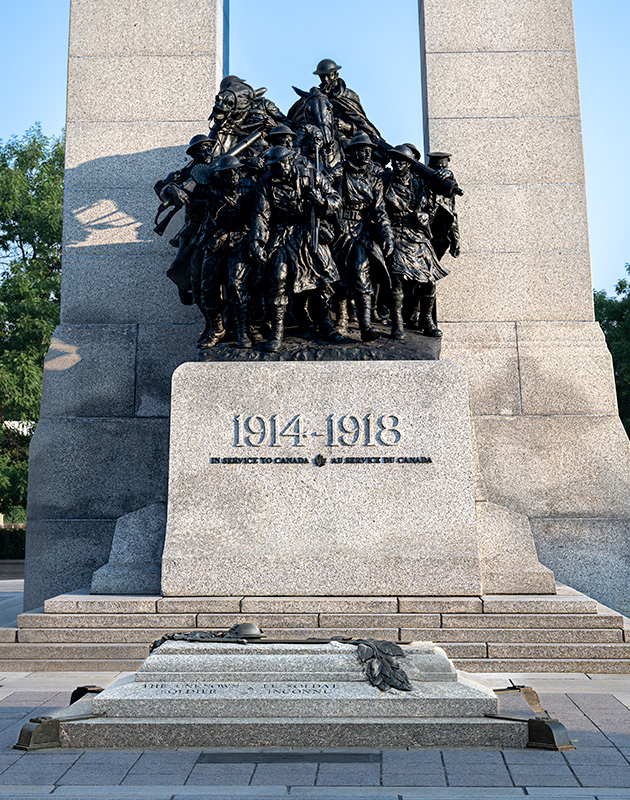Mourning and Meaning: Why War Memorials Matter
- Nov 20, 2025
- History
- 3 minute read
Every year on November 11, people in Canada join together to collectively honour and remember all Canadian service members. But, across the country, there are memorials standing as a tribute to those who serve and have served—offering a tangible link to the past that can be accessed at any time, allowing individuals and communities the space to mourn and show gratitude.
To commemorate the 25th anniversary of the repatriation of Canada’s Unknown Soldier, we spoke with Dr. Stacey Barker, Historian, Arts and Military History at the Canadian War Museum in Ottawa, about some of Canada’s most revered war memorials and why they are so important. Keep reading to learn more.


Every year on November 11, people in Canada join together to collectively honour and remember all Canadian service members. But, across the country, there are memorials standing as a tribute to those who serve and have served—offering a tangible link to the past that can be accessed at any time, allowing individuals and communities the space to mourn and show gratitude.
To commemorate the 25th anniversary of the repatriation of Canada’s Unknown Soldier, we spoke with Dr. Stacey Barker, Historian, Arts and Military History at the Canadian War Museum in Ottawa, about some of Canada’s most revered war memorials and why they are so important. Keep reading to learn more.

An Eternal Tribute
“At a fundamental level, memorials are there to help us remember those who served and those who died,” says Dr. Barker. “They can be many things, from monuments to artwork to street names. Taken together, they are signposts in our collective memory.”
Canada has over 6,000 designated war memorials located across the country, as well as some located overseas, like the Canadian National Vimy Memorial in France. In Ottawa alone, there are 553 registered memorials, two of the most prominent being the Canadian War Museum and the National War Memorial, where Canada’s Unknown Soldier rests.
In fact, the Canadian War Museum has a special connection to Canada’s Unknown Soldier.
“Memorial Hall is a quiet, contemplative place at the museum where visitors can sit and reflect,” says Dr. Barker. “After the Unknown Soldier was taken home to Canada, his original headstone came into the care of the Canadian War Museum. An incredibly significant artefact, it was given a place of honour in Memorial Hall, where it is the sole object.”
On Remembrance Day, sunlight shines directly on the headstone, fully illuminating it every November 11 at precisely 11 a.m.
“The illumination of the headstone is powerful and moving. Visitors often leave their poppy on top of the headstone, in much the same way as others leave them on top of the Tomb of the Unknown Soldier at the National War Memorial,” says Dr. Barker. “These are personal gestures of respect and remembrance.”

A Country United
Canada’s Unknown Soldier rests in front of the National War Memorial in downtown Ottawa, Canada’s primary war memorial to mark the service and loss of Canadians. It is also the site of Canada’s National Remembrance Day Ceremony.
“Unveiled in 1939, the National War Memorial was originally a First World War monument. Changes have occurred, though, over the decades. It now represents other wars that Canadians have fought, and in 2000 the Tomb of the Unknown Soldier was added,” says Dr. Barker. “He quickly became the Memorial’s focal point of remembrance. Canadians often leave poppies and mementos relating to service and loss, reinforcing that it is a space to contemplate war and its consequences.”
Today, people in Canada continue to honour those who serve and have served, whether through memorials old and new (such as the recently renovated National Newfoundland War Memorial where the Tomb of an unknown Newfoundland First World War soldier now rests) or periods of observation and commemoration (like Veteran’s Week, which leads up to and culminates with Remembrance Day). And this year, on the 25th anniversary of the repatriation, Canada’s Unknown Soldier remains a poignant reminder of sacrifices made.
“The repatriation of an unknown Canadian soldier, one of the thousands who lost their identity in death, was a powerful commemorative act that still resonates today. You see it on November 11, but you also see it throughout the year when people visit and have a quiet moment with this soldier. He stands for all lost in war, and in that sense, he provides everyone with a place to reflect, to grieve, and to remember.”

Gone, Never Forgotten
Now and in the years to come, we as a nation will remember and pay tribute to the ultimate act of service of those who protect our freedoms, including the many who rest unknown. Discover the new Honouring Canada’s Unknown Soldier commemorative $2 circulation coin, a reverent salute to Canadian service members and to the anonymous hero who symbolizes our country’s 120,000 fallen souls.
The Poppy Design is a registered trademark of The Royal Canadian Legion (Dominion Command) and is used under licence.
--
Image 1 (Memorial Hall, Canadian War Museum) Photo Credit: Steven Darby, CMC
Image 2 (National War Memorial) Photo Credit: Richard Lawrence Photography
Image 3 (Poppies on Tomb of the Unknown Soldier) Photo Credit: Veterans Affairs Canada



